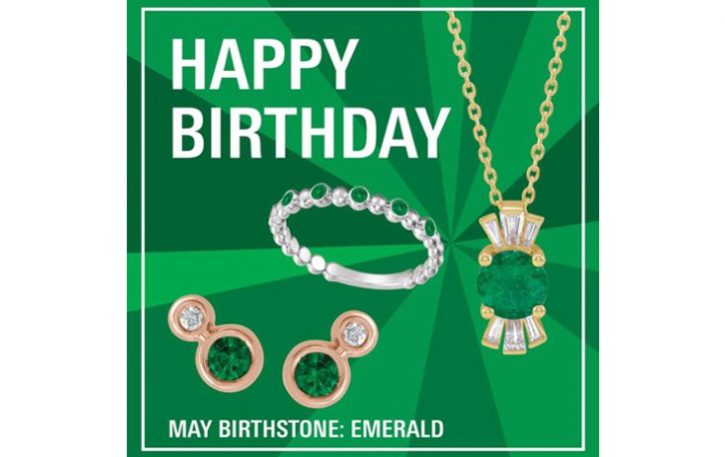May birthstone
EMERALD GEMSTONES-from the Stuller Inc blog
Let’s go back to the Emerald City of Oz and forget about clicking the heels of our ruby slippers. Let’s click our emerald slippers instead as we enter the realm of emerald beauty. This irresistible force has long exerted a powerful attraction on the rich and famous, from the rulers of ancient India to today’s A-List celebrities on the red carpet.
Of all emerald devotees, Cleopatra is probably the most famous. Her passion led her far beyond jewelry. She wore emerald encrusted robes — a luxury by any standard. And she gave loose emeralds as gifts to visiting dignitaries, all of them men. They, too, appreciated the beauty of emerald gemstones.
Did You Know?
Emerald gemstones were sold 6,000 years ago — circa 4000 BCE — in Babylonian markets. Where were they from? We don’t know. But between 1000 and 3000 BCE, one of the earliest emerald occurrences was discovered in Upper Egypt near the Red Sea. This later became known as “Cleopatra’s Mine.”
“The Green of Growing Things”
The name emerald comes to us from the Greek word, smaragdos. The origin of smaragdos could be either the Hebrew word izmargad or the Sanskrit word marakata, meaning “the green of growing things” — fresh, vivid, radiant.
I like the Sanskrit version. It communicates the lush range of emerald hues from a yellow-green to a deeper blue-green. Think of the first leaves of spring and follow this verdant trail to the richer shade of spruce green. Along the way, you embrace a world of growth that reflects emerald gemstones and their mesmerizing power.
Kermit Was Wrong — Way Wrong!
Kermit the Frog famously sang “It’s not easy being green.” But when you’re admiring emerald gemstones, you realize he had it all wrong. In addition to their famous beauty, extraordinary powers have been attributed to emeralds through the ages. Read these and you’ll realize that all of your customers need to have emerald jewelry. The more the better!
- In 4th century BCE, the Greek philosopher Aristotle wrote that emerald gemstones increase its owner’s importance in presence and speech during business transactions, gives victory in trials, and prevents epilepsy.
- Throughout history, many cultures believed emerald enhanced fertility and fidelity: not a bad combination.
By the Middle Ages, emerald’s powers had increased.
- Emerald could keep a woman chaste — but not a man!
- They could reveal truth and falsehood.
- They acted as an antidote to spells, enchantments, and demons.
- Emeralds could foretell the future if worn on the left side — but not the right.
- They made people more intelligent and honest.
- A high-quality emerald would change hues to alert its wearer of danger.
The Irish have always had a special relationship to emerald, too. After all, Ireland is often called the Emerald Isle. And what did the Irish believe? (Full disclosure: I’m half Irish). They believed Emerald bestowed good luck and perhaps a pot of gold at the end of the rainbow.

